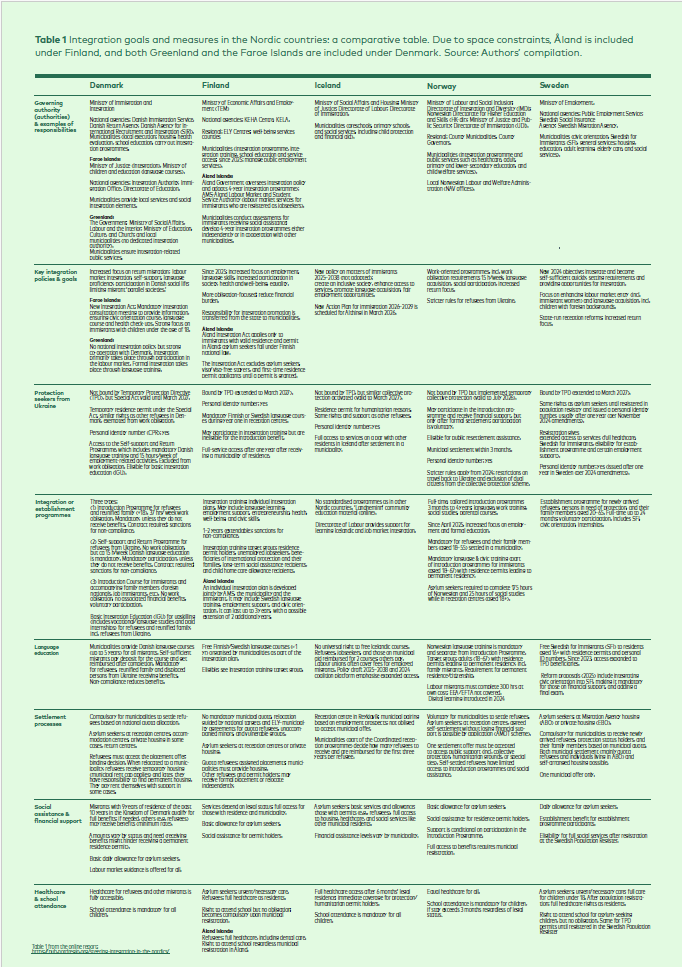Who does what? A comparative guide to integration policy in the Nordics
Integration, Migration & utveckling
20 nov 2025
A new report provides up-to-date, comparable insights into how integration is governed and implemented in Denmark, Finland, Iceland, Norway, and Sweden, with shorter sections on the Faroe Islands, Greenland, and Åland. It includes a comparative summary table, attached as a PDF, offering a quick reference for policymakers.
Integration is not just about services; it is about coordination across multiple levels of governance. This report shows who is responsible for integration, current policy shifts in the Nordic countries, and how programmes differ across countries. By comparing governance models, strategic priorities, and practical measures, the report helps authorities identify promising practices for effective integration.
How we collected the data
The findings are based on research conducted between May and September 2025, complemented by expert interviews and written contributions from each country. Sources include official government websites, legislative texts, and policy documents. This ensures both accuracy and relevance for decision-makers.
Nordic integration policies: recent shifts and priorities
Across all Nordic countries, integration is coordinated at the national level, but municipalities deliver most services, from housing and language training to social assistance. Regional authorities play a limited but important role, mainly in healthcare and monitoring, while civil society organisations provide complementary services such as counselling and orientation activities.
Recent years have seen a shift from rights-based approaches to obligations and individual responsibility. There is a stronger emphasis on labour market integration and language proficiency, with Denmark and Sweden aiming for rapid self-sufficiency, while Finland and Norway balance support with clear expectations. These changes reflect a broader trend toward active participation and prevention of parallel societies, while still promoting equity and well-being.
Integration in practice
Introduction programmes are mandatory in most countries and combine language training, civic orientation, and employment measures. Language training is widely available, though conditions vary: Denmark and Norway link participation to benefits or residence status, while Sweden offers broad access through Swedish for Immigrants. Settlement schemes differ significantly, with Denmark and Sweden enforcing mandatory municipal placement, Norway and Finland using voluntary models, and Iceland offering the greatest freedom of movement.
A comparative table
The attached summary table distills these differences into a clear, side-by-side comparison. It covers governance structures, policy goals, programme obligations, language training models, settlement processes, and access to social assistance and healthcare. This table is the fastest way to understand where your country stands and where lessons can be learned from others.

Relaterade nyheter
Integration
8 dec 2025
